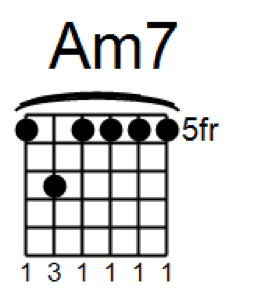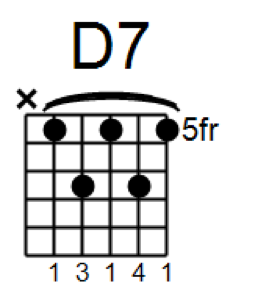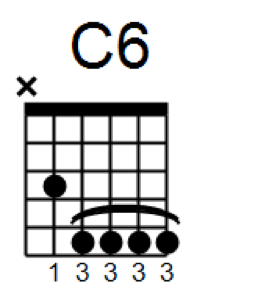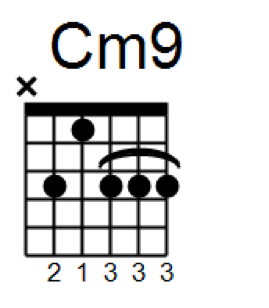When most guitar players first start out playing songs, they typically learn chords that make up what’s called a “1-4-5” progression. That’s a very common progression in blues and rock, and they are easier for beginners to grasp as they are all major chords.
For example, in the key of G a 1-4-5 progression is G (1), C (4), and D (5). The numbers relate to chords built on the corresponding note of the scale which you are playing in.
After awhile you may get to the point where you want to expand your musical horizons a bit. Without a doubt, jazz may be what you’re looking for!
Jazz it up!
Anybody that has spent any time listening to jazz will tell you that it surely doesn’t sound like the simple rock chords – because they aren’t! They admittedly are more complex, but there are some relatively simple ones that you can work on right away without getting your mind blown too much by music theory.
Let’s take a look at few:

Am7 (pronounced as “A minor seventh”) is the same as a traditional minor chord except it adds a b7th note into the chord spelling.

D7 (pronounced as “D seventh”) is a major chord with – you guessed it – an added b7th note as well.

Gmaj7 (pronounced “G major seventh”) is a major chord as well. The difference between a dominant 7th chord and a major 7th chord is that in a major 7th chord the added note is a natural 7th note instead of a b7th.
I picked these three chords (and the fingering patterns) in particular for a few good reasons:
- Remember when we talked about a 1-4-5 progression? A very common chord progression for jazz tunes is a 2-5-1 progression. Following the numbers as with the 1-4-5, in the key of G that gives you A (2), D (5) and G (1).
- Seventh chords (both major and minor) are where many of the fancier (and more complicated) jazz chords are derived from. Getting these under your belt will help get you moving in the right direction.
- Several jazz standards can be played with a 2-5-1 progression. Take a look at your favorites and you may be surprised at how many of them there are!
- The voicings I chose are all barre chords, but that was on purpose – barre chords are “movable”, so you can use the same shape along the neck to get these chords in every key. For example – move the Gmaj7 from the 10th fret down to the 7th fret – you now have Emaj7 instead (the 1 chord in the key of E).
- The root notes for all of the chords is on the 5th or 6th string.
Other beginner jazz chords
Here are a few other chords that are good to have in your vocabulary. Remember that learning the fingering is important since you can move them around the neck as you need to:



Spice things up by adding a maj6 instead of a straight-up major chord. Substituting a 9th chord will certainly add some flair to any 7th chord. Or take a pop song and play a maj7 instead of a major chord, or a minor 9th instead of just a regular minor.
Expanding your chord vocabulary is a great way to add color, style, and personality to your playing. Take the time to learn these basic jazz chords – it’s time well spent.